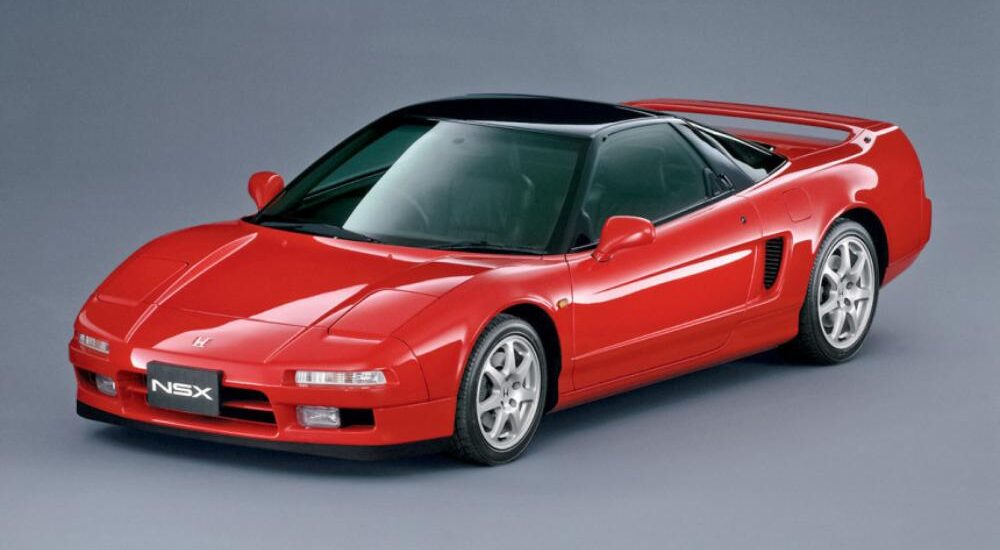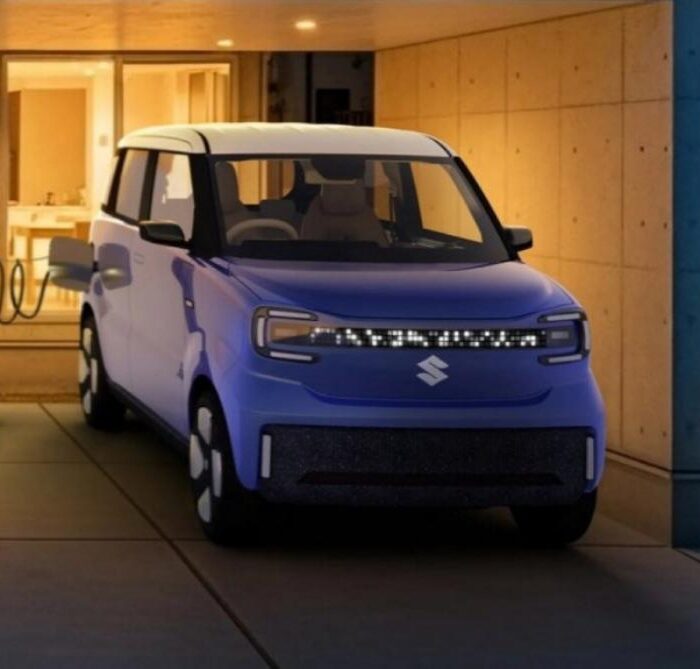How quickly time flies! It seems like just yesterday, on the pages of Autoreview, we described this car as a cutting-edge creation of the Japanese automotive industry, mentioning it in the same breath as supercars like the Jaguar XJ220 or Lamborghini Diablo, under headlines such as “Big Toys for Grown-up Boys” or “Tenderness for the Roaring Beast.” And suddenly, more than three decades have passed. Gone in a flash. This means the first-generation Honda/Acura NSX has officially become an oldtimer and simultaneously transformed into a collectible rarity!
The project’s inception dates back to the distant year of 1984. Initially, it involved a joint development by the Japanese firm Honda and Italian coachbuilder Pininfarina under the codename HP-X. The idea was a mid-engine, rear-wheel-drive vehicle equipped with a V-shaped six-cylinder engine with a displacement of 2.0 liters, inspired by Honda’s Formula 2 racing engine.
The only completed prototype was showcased to the public at the 1984 Turin Motor Show. Its design was distinctly Pininfarina-esque: an extremely wedge-shaped profile, “corrugated” sides seamlessly integrating cooling air intakes, a transparent canopy entirely tilting to access the two-seat cockpit, a futuristic interior, and concealed headlights. Altogether, it looked avant-garde, especially by mid-1980s standards, but putting it into series production exactly as presented was out of the question.
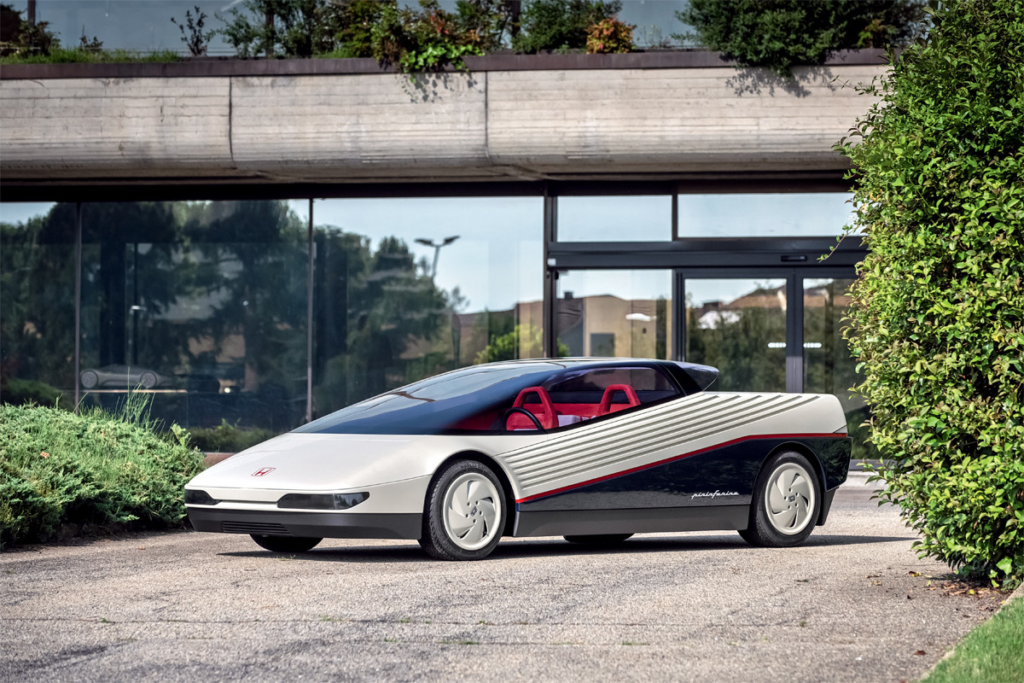
The mid-engine Honda HP-X concept car was created in 1984 in collaboration with Pininfarina. Forty years later, the unique car was taken out of storage, carefully restored and exhibited at the Pebble Beach Concours d’Elegance
Meanwhile, Honda’s ambition to introduce a mid-engined sports car to the market was growing, aiming to join the ranks of the world’s elite carmakers. Importantly, it had to be a six-cylinder car—not directly competing with Ferrari’s eight-cylinder models but still delivering comparable performance. Thus, the project proceeded.
Leading the development were Shigeru Uehara, Honda’s chief engineer, and Masahito Nakano, chief designer. They emphasized extensive aluminum use—not only for chassis and body parts but also for the engine, almost entirely made from the “winged metal.” However, this engine became renowned primarily for its innovative valve timing mechanism, featuring an advanced electronic control system managing valve opening duration and lift.
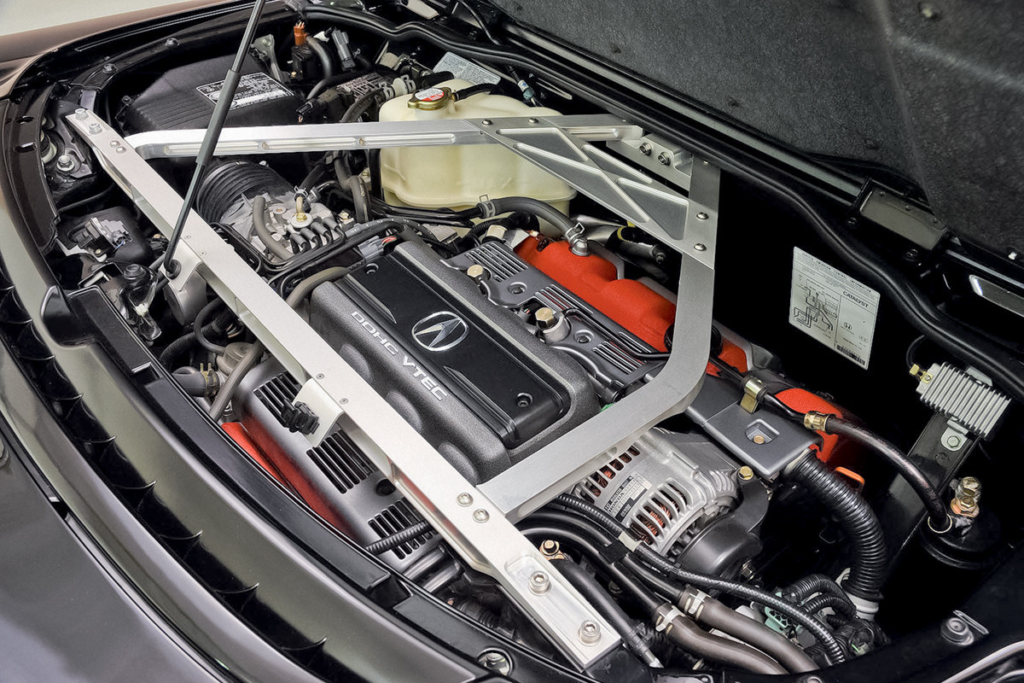
The V6 engine is mounted transversely behind the seats. The three-liter C30A engine was the second in history to be equipped with the VTEC system. This car has its upgraded version C32B: the working volume has been increased from 3.0 to 3.2 liters, maximum power – from 274 to 294 hp at 7100 rpm, and torque – from 285 to 304 Nm at 5500 rpm. The refusal to use turbocharging was a fundamental position of Honda engineers
This system operated automatically, incorporating four valves per cylinder, two camshafts, and three cams per valve. Electronics selected the cams based on accelerator pedal position and crankshaft speed. Developed by Honda engineer Ikuo Kajitani, this innovation later became famously known as VTEC and found various applications in other Honda vehicles, influencing similar systems by many other manufacturers.
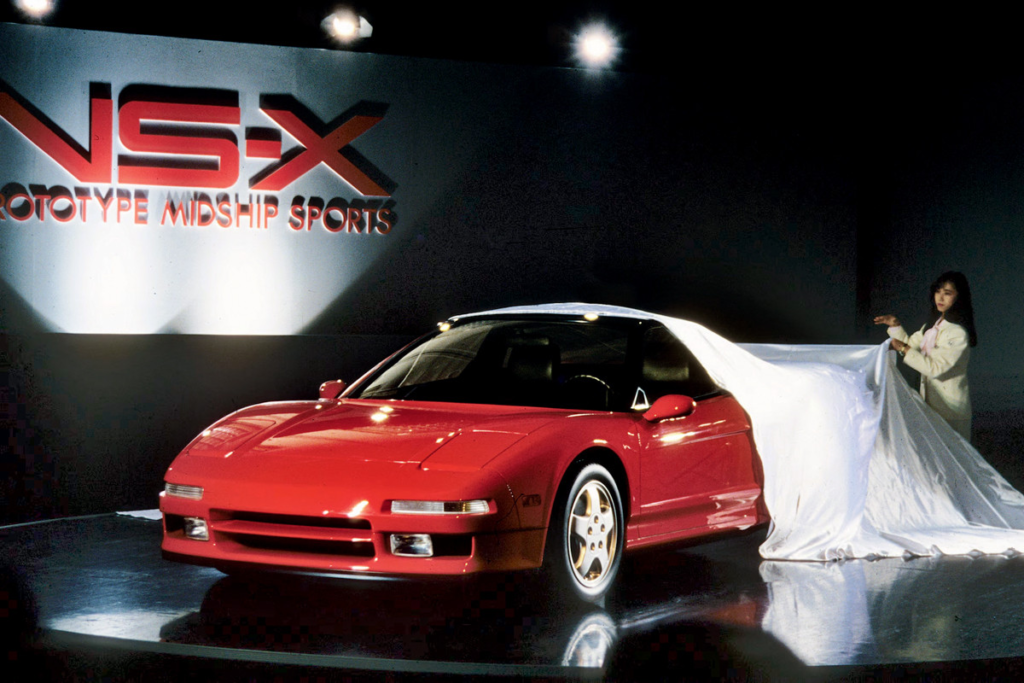
Debuted at the Chicago Auto Show in 1989. At that time, the car was called Acura NS-X and had the status of a concept car, but the coupe went into production almost unchanged. According to the official version, the designers were inspired by the appearance of the F16 fighter. By the way, the car index had a simple decoding: New Sportscar eXperimental
The NSX debuted at the 1989 Chicago Auto Show, making its European premiere at the 1990 Turin Motor Show. It was advertised as “the world’s first all-aluminum car,” although, notably, the connecting rods in its 3.0-liter V6 engine were made of titanium—a global automotive first. They conveniently omitted mention of high-strength cast-iron cylinder liners.
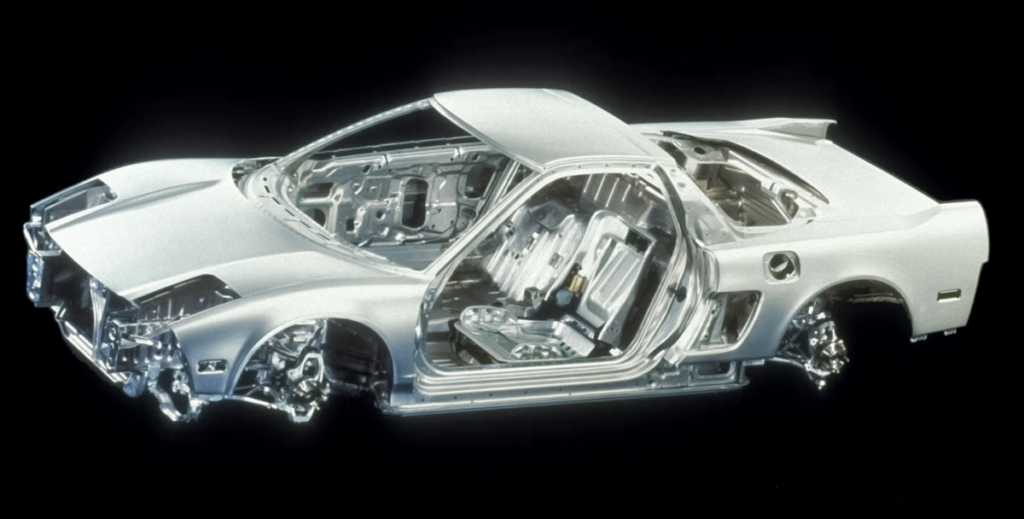
The Honda/Acura NSX was the world’s first production car with an all-aluminum body. Together with the doors and trunk lids (there are two, front and rear), it weighed 210 kg – 140 kg less than a similar steel body. In fact, only six large parts in the car were made of steel: the engine exhaust manifold, the base of the front panel and four brake discs.
Still, aluminum did significantly influence the vehicle’s construction, employing five different alloys, including the so-called 6000-series alloy, previously untested in automotive use. Thanks to the achieved weight reduction, the NSX’s dynamic characteristics notably surpassed those of the Ferrari 328—the car it was specifically intended to rival.
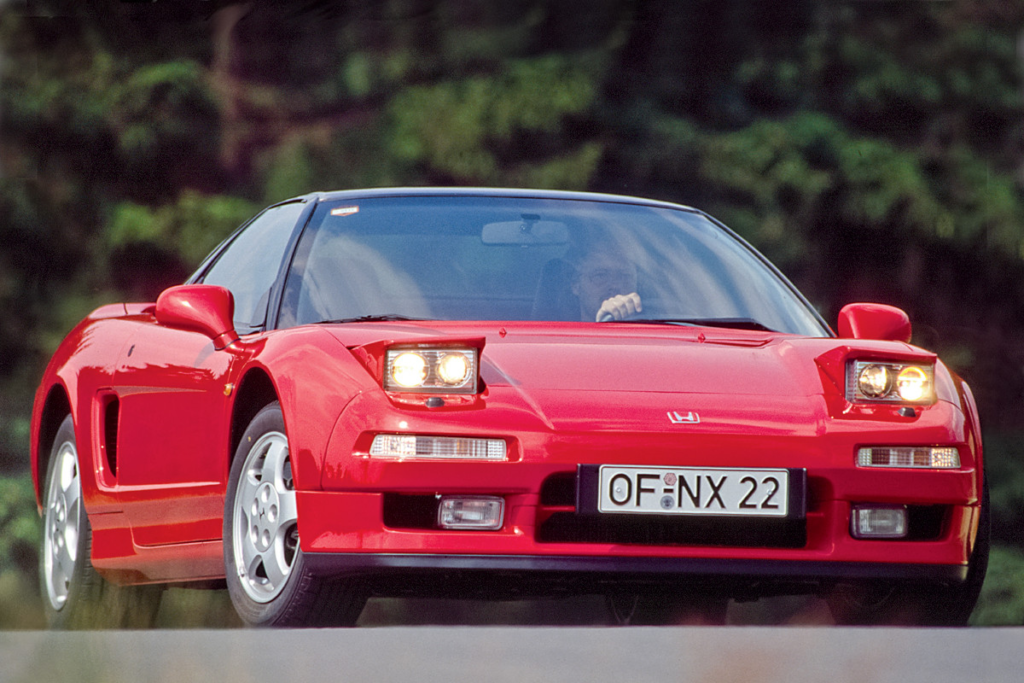
When raised, the headlights look like this. The washer system with a second pump in the tank was only available for cars for the European market.
The Japanese coupe’s top speed reached 270 km/h, accelerating from zero to 100 km/h in just 5.9 seconds—even in a “consumer” version not specifically tuned for ultimate sports performance. Removing comforts such as adjustable leather seats, air conditioning, and audio systems, and fine-tuning the engine to rev up to 9,000 rpm (instead of the standard 8,000 rpm), the NSX became suitable for competitive motorsports. However, such versions were exclusively available in Japan.
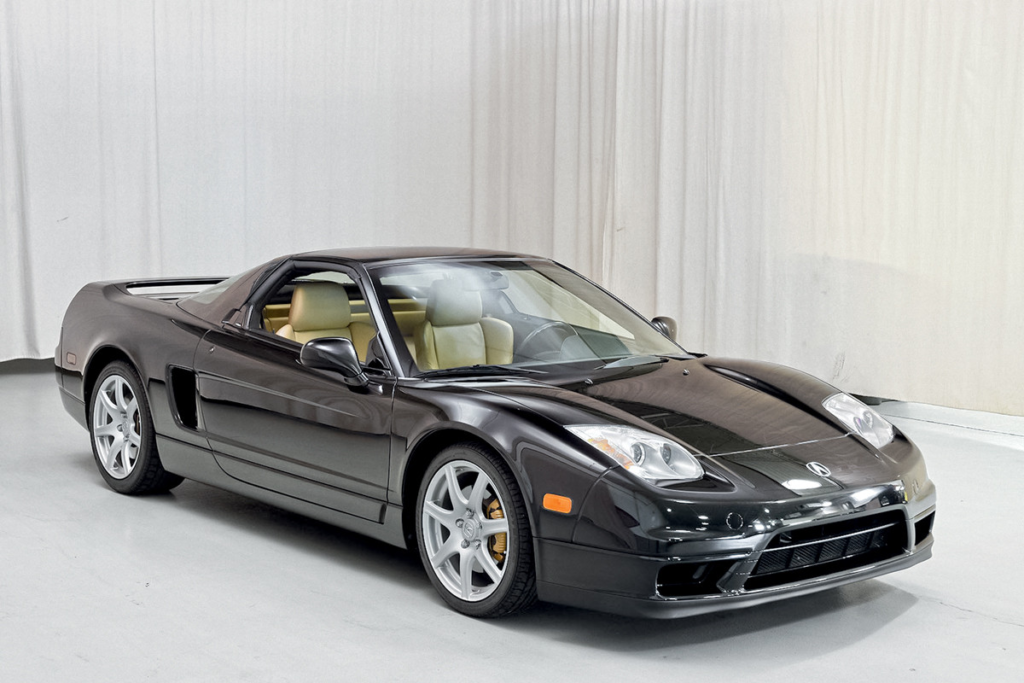
Since December 2001, Honda switched to the production of restyled cars. The main loss was the pop-up headlights, in place of which stationary xenon spotlights appeared

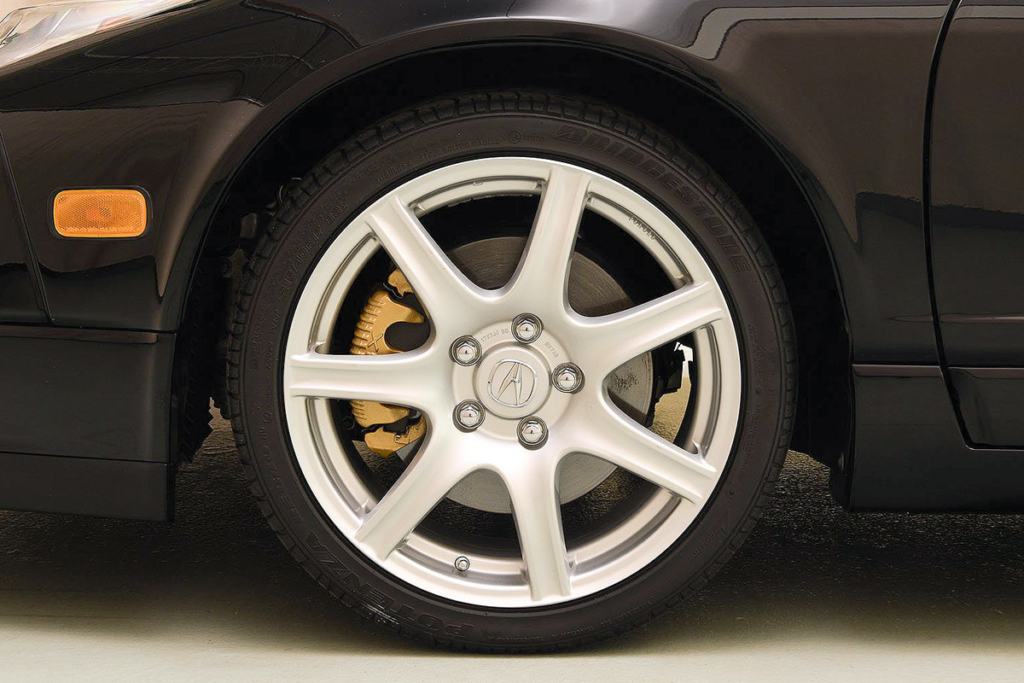
If the early NSX had 15-inch wheels in the front and 16-inch wheels in the back, then the updated cars had the diameter of all wheels increased by one inch
Sales commenced in 1990, featuring a 2977 cc engine paired with a five-speed manual transmission. Most markets received it as the Honda NSX, but North America and Hong Kong used the more prestigious Acura brand—then relatively new and in need of a flagship model. Starting in 1994, a four-speed automatic SportShift transmission (also known as F-Matic) was available. In 1995, a targa-top version featuring a removable roof section was introduced.

Since 2002, export cars were supplied only with a targa-type body, i.e. with a removable roof. Production of the basic coupe continued only for the Japanese domestic market


The serial number plates are attached to the door sills
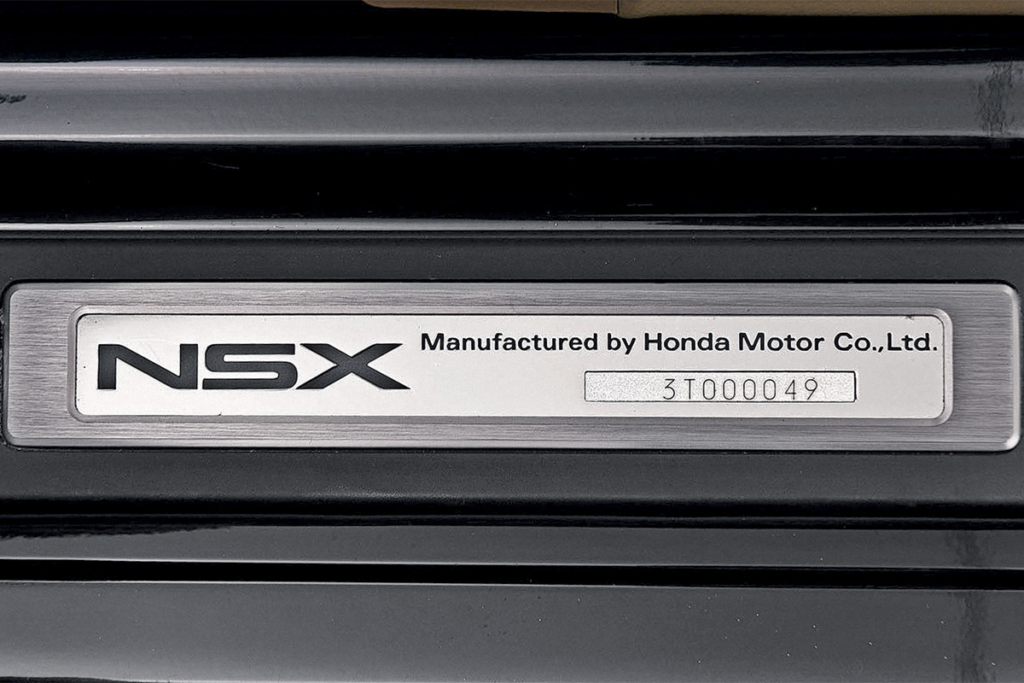
The 3T symbols indicate that this model was produced in 2003
A major technical update occurred in 1997, increasing engine displacement from 3.0 to 3.2 liters, introducing a six-speed manual gearbox, strengthening the body, and expanding equipment. However, the NSX’s exterior appearance remained virtually unchanged until a facelift in late 2001, when the iconic pop-up headlights were abandoned.
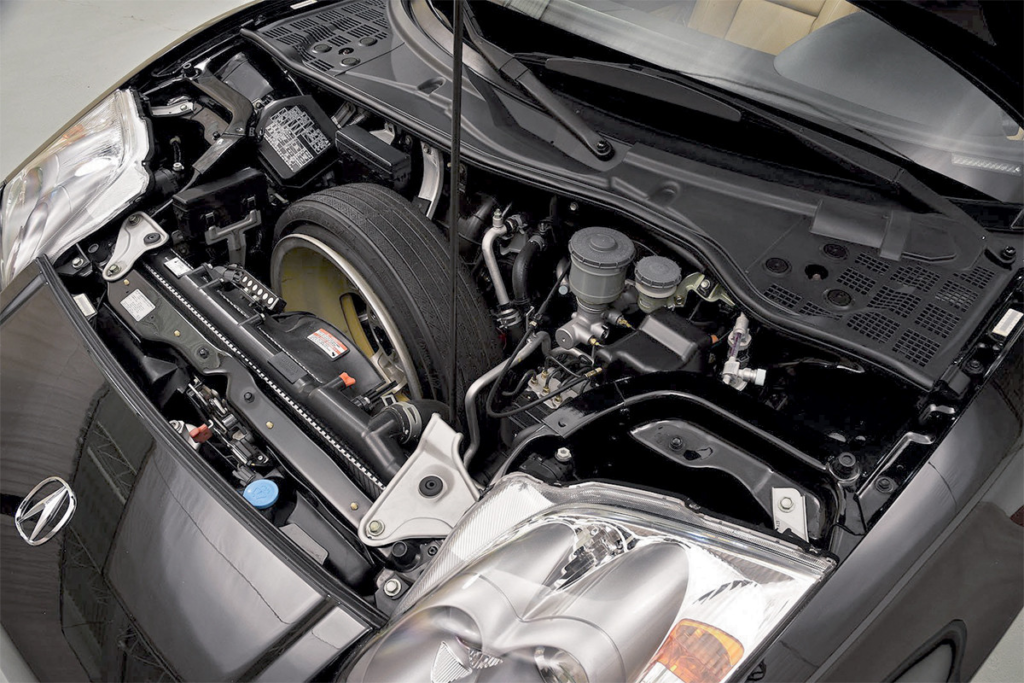
The front trunk, strictly speaking, is not a trunk at all, because you can’t put things here. But the spare tire is located here, and it must be deflated – otherwise the sloping lid of the compartment will not close
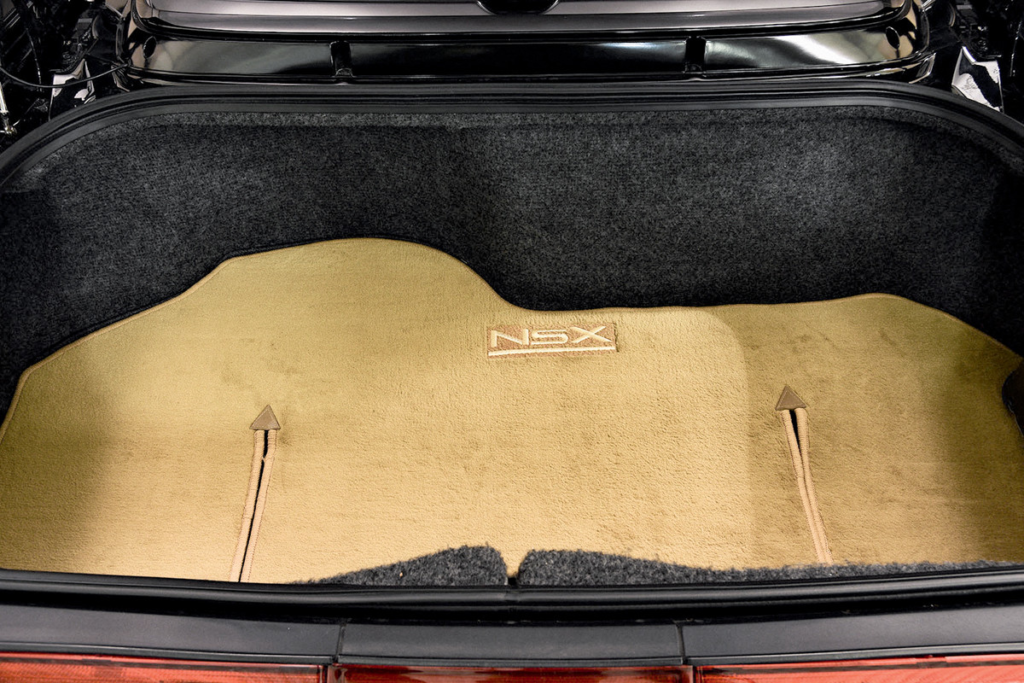
But the rear trunk can easily accommodate a couple of suitcases. But such a roomy compartment is not a special idea of the engineers, but a “side effect” from the need to make a long tail, which plays into the hands of proportions and stabilizes air flows
Honda built a dedicated factory in Tochigi prefecture on Honshu Island, staffed by carefully selected specialists with over ten years of experience at Honda. Most first-generation Honda/Acura NSX units were manufactured here between 1990 and 2004. Today, this facility is part of Honda’s production cluster near the city of Mooka, although NSX production was transferred in early 2004 to Honda’s plant in Suzuka, closer to the world-renowned race circuit. Production of the first-generation NSX concluded there in late June 2005.

After the 2001 facelift, the rear turn signals were separated into oval sections. And this is the only significant change in the rear design for all fifteen years of production.
Over fifteen years, 18,896 first-generation NSX cars were built—far fewer than developers anticipated, as the Tochigi factory was initially planned for annual production of six thousand supercars. Unsurprisingly, the second-generation NSX arrived only a decade after the original model’s discontinuation. But that is another story altogether.
Photo: Honda | Sean Duggan, Hyman Ltd.
This is a translation. You can read the original article here: Олдтаймер: как появился суперкар Honda/Acura NSX

Published July 17, 2025 • 7m to read

